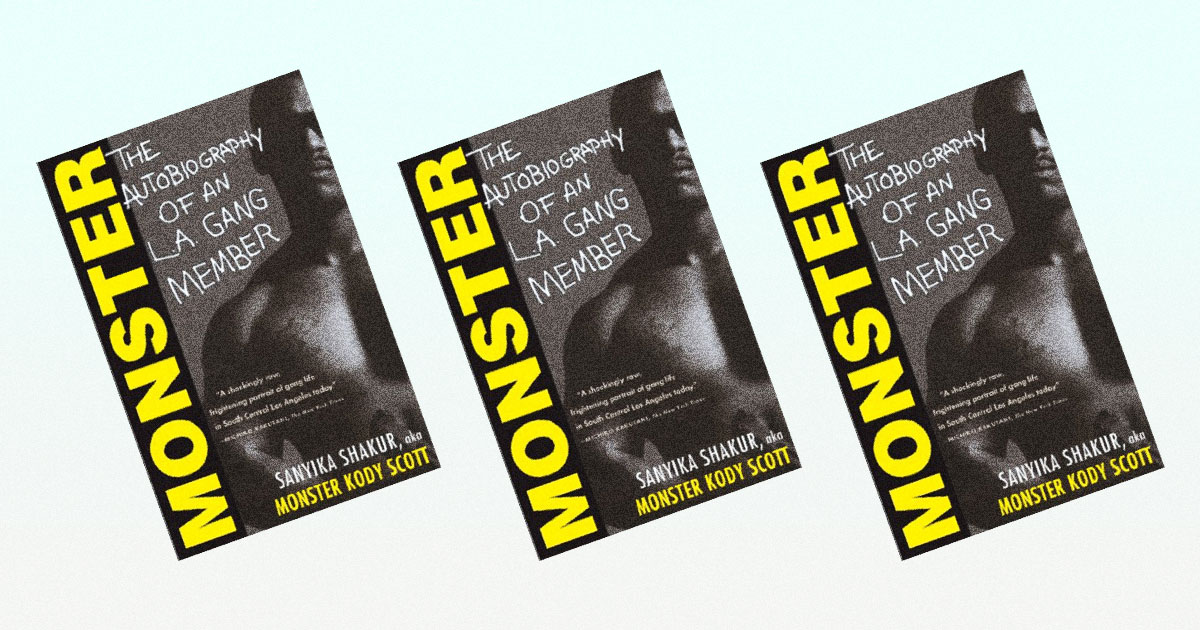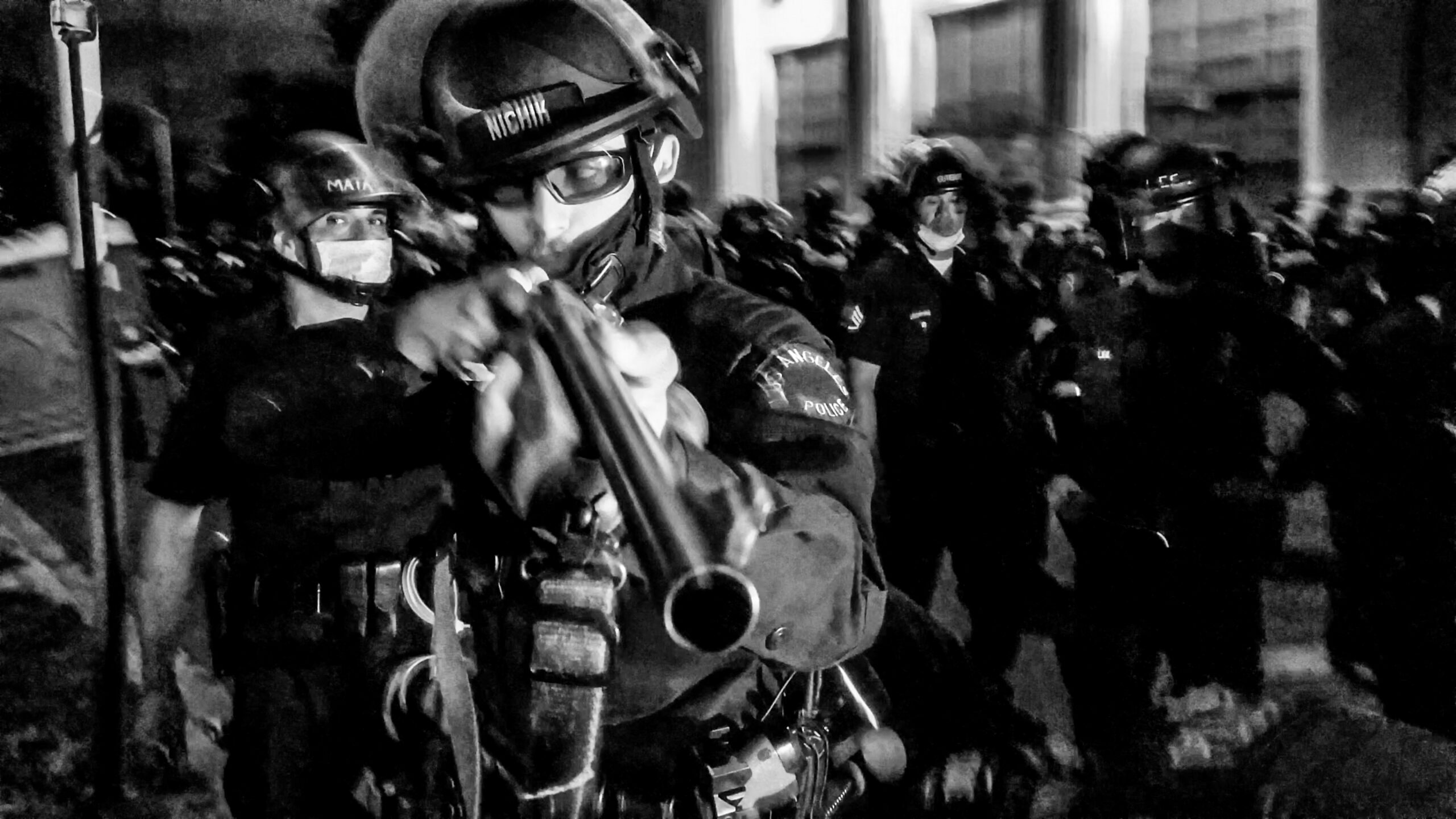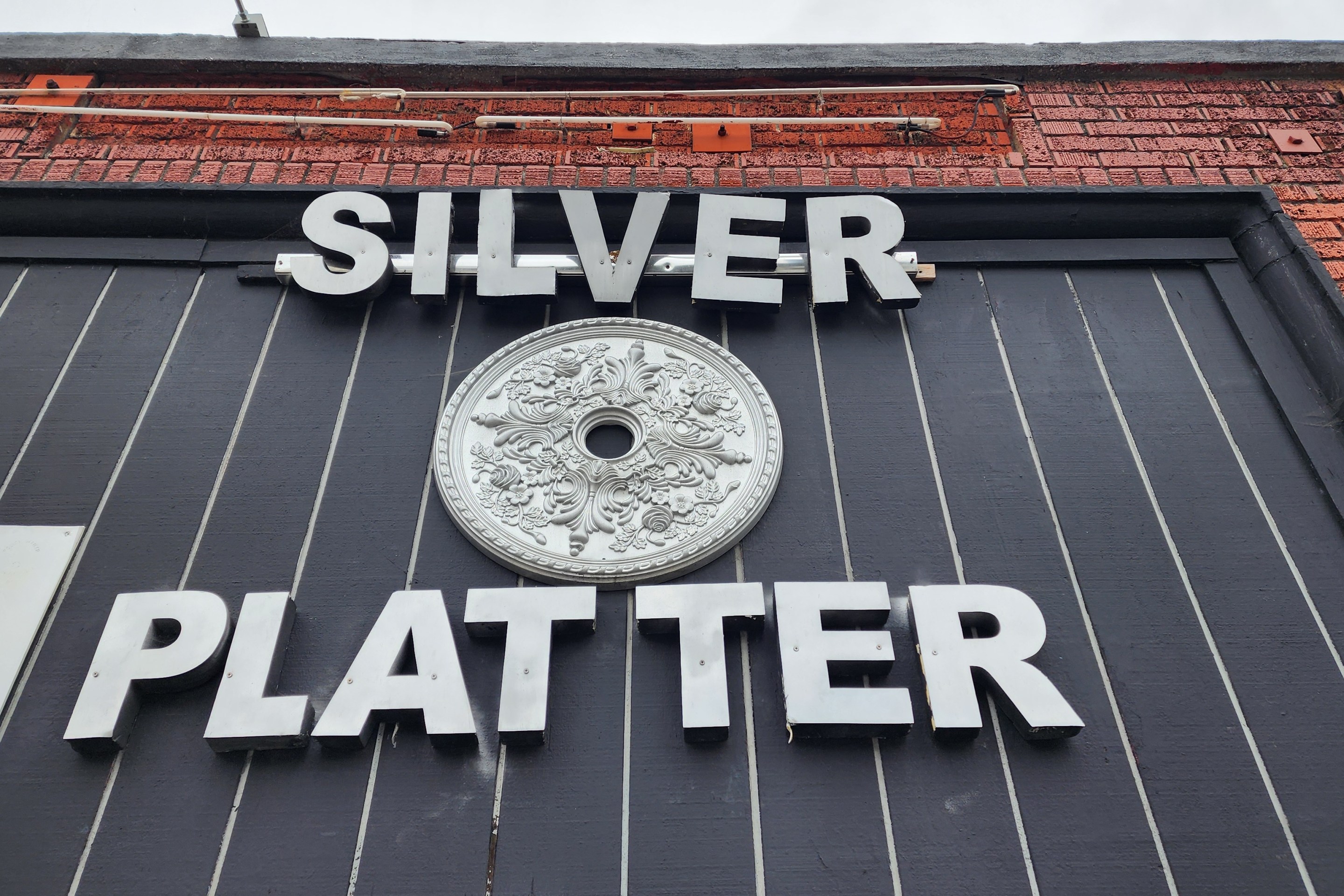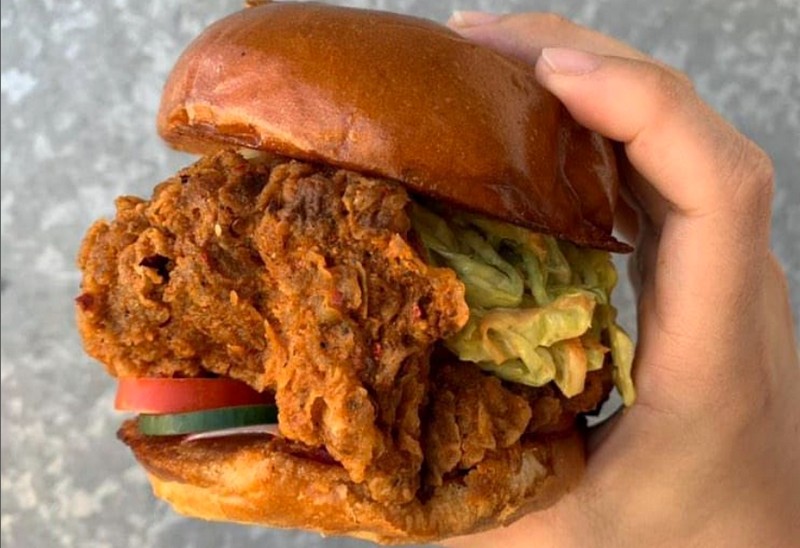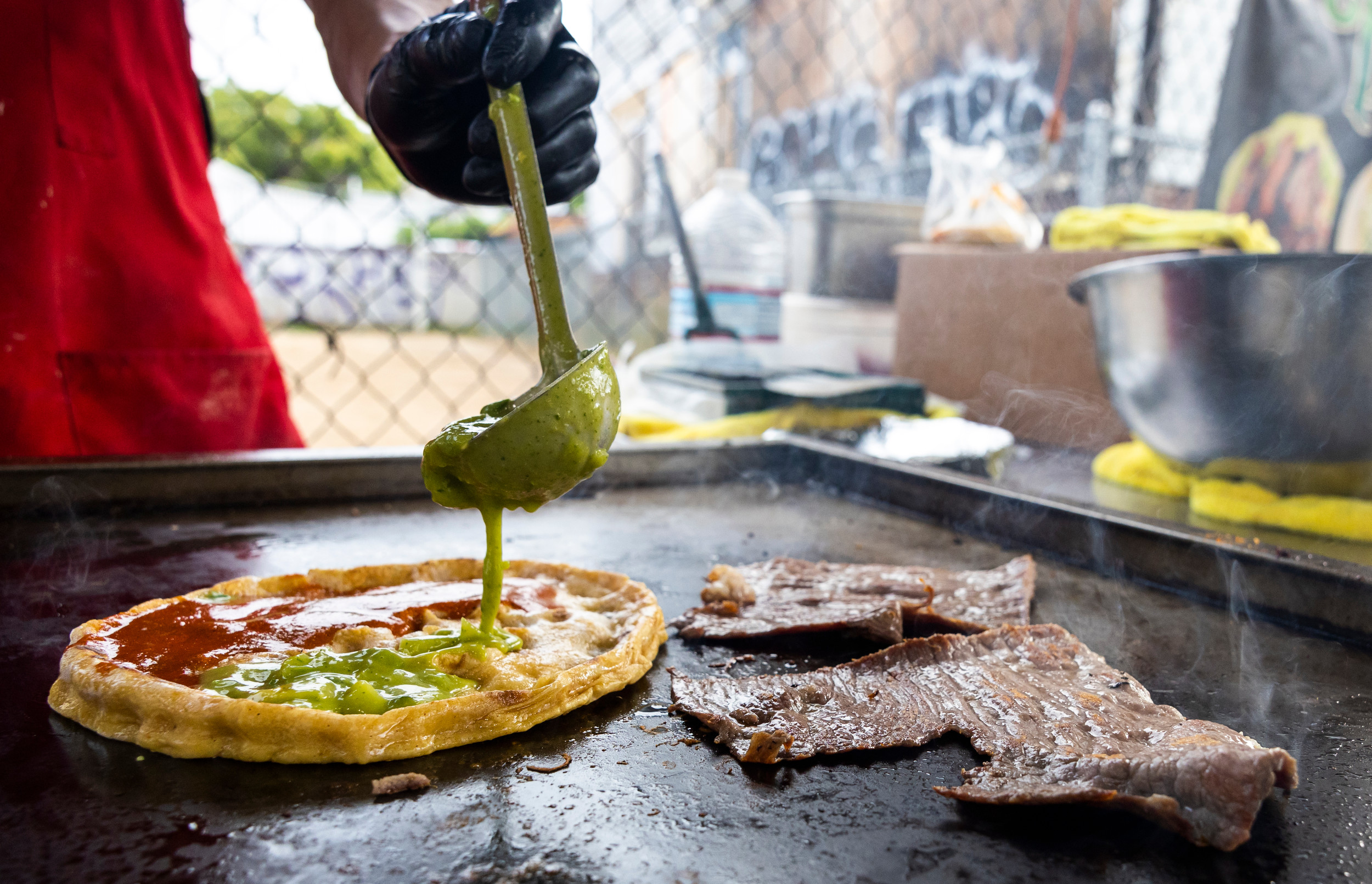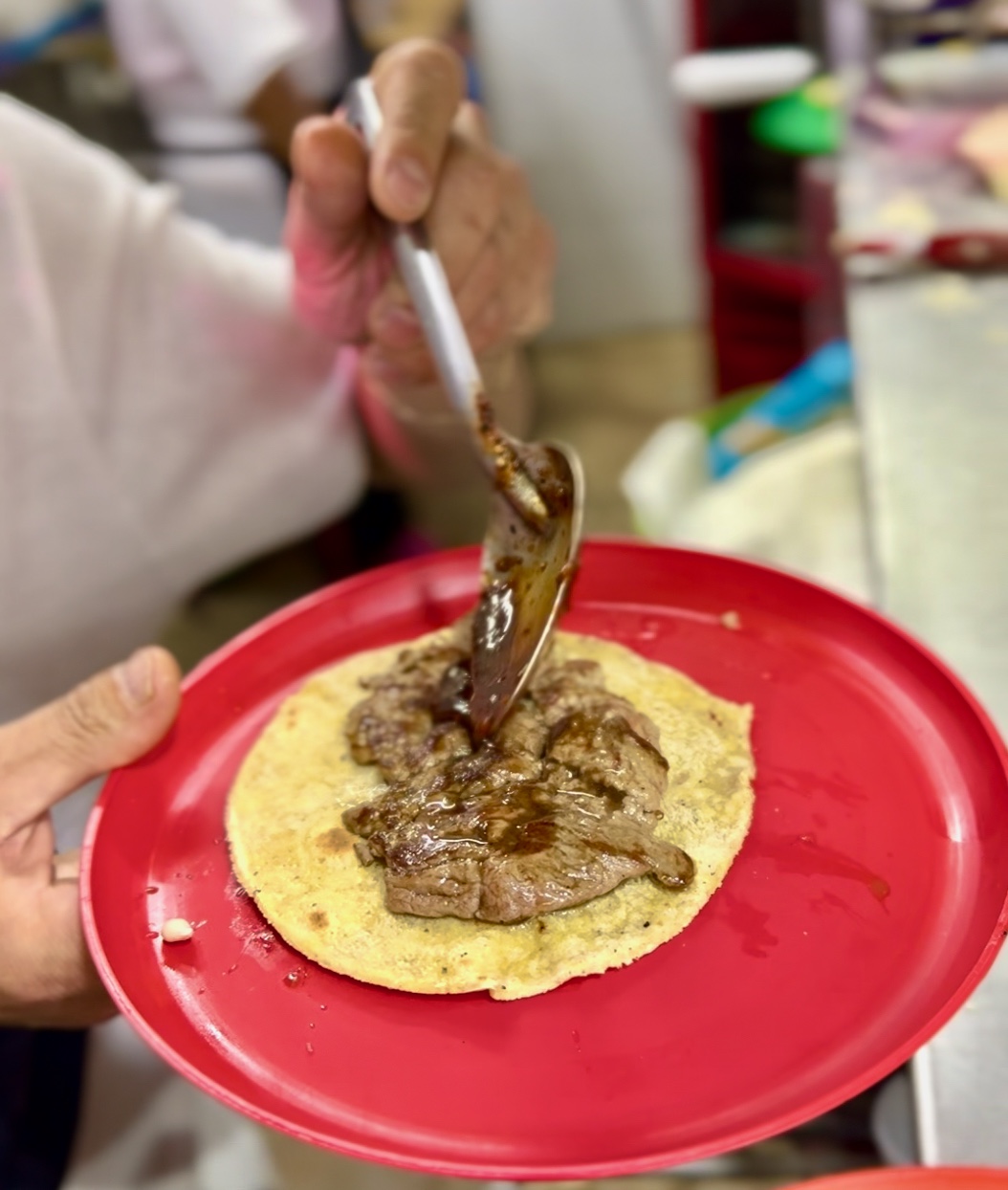[dropcap size=big]S[/dropcap]anyika Shakur, the infamous former Eight Tray Gangster Crip who was once known as “Monster” Kody Scott, was reportedly found dead on June 6 at the age of 57 in a tent along the San Luis Rey River Trail in Oceanside, CA.
Shakur first blasted into national consciousness both on the cover and in the pages of Leon Bing’s seminal 1992 book on L.A. gangs, Do or Die. The next year, Scott published his own best-selling memoir, Monster: Autobiography of an L.A. Gang Member, which he penned by hand, mostly while in solitary confinement at Pelican Bay on a conviction for assault with a firearm.
Appearing on the cover shirtless, jacked-as-all-fuck, inked torso scarred from the six shots that tried to snuff him at 16, and gripping a MAC-10 between both palms behind his pair of pitch-black Locs, Scott’s bold, shocking bio laid bare a crazy life. The book covered a childhood steeped in abuse and neglect, the era of 70s and 80s L.A. gangbanging, his predilection for homicide and self-medication, and perpetual prison stints at a time when many outside the world of gang warfare struggled to understand L.A.’s uprising and exploding early 90s violence. The book would turn him into a star of the international literary world.
Scott was jumped into Eight Tray, a newly spun-off set of the foundational West Side Crips, in 1975 as a sixth grader navigating the Harvard Park neighborhood of South Central Los Angeles. The young Monster, a neglected latchkey kid habitually left to fend for himself in the rough neighborhood, was a constant presence at the house of his mentor and neighbor, Crips founder Stanley “Tookie” Williams. Scott himself was a founder of the Northside Eight Tray Gangster Crips set.
Possessed by an impassioned hatred for his enemies, primarily Eight Tray’s biggest rivals, the Rollin’ 60s Neighborhood Crips, the killing started immediately, only sporadically interrupted by Scott’s recurring stays in YA and prison.
Two years later, at the age of 13, he would take on the street name “Monster” after permanently disfiguring an older man during a 20-minute stomping. Police are said to have first used the word to describe Scott upon seeing his victim.
It stuck. And shortly became synonymous with a sort of superhuman executioner from the world of L.A. gangs, both in the streets and our nation’s nightmares.
In his soon-to-be-notorious bio, Shakur also renounced gang life and detailed his transition into an outspoken, powerful, omnivorously reading Black nationalist intent on inspiring young men who grew up like him to wake up and fight the traps the U.S. was laying for them.
Torn between a criminal past and his higher calling, Shakur leaves behind a complicated legacy: a plausible psychopath responsible for snatching numerous young lives from his Black male peers while still just a child himself, his spreading rep, surgical shotgun skills, military-strength ambush abilities, and dominant, wide-spread set shaking both enemies and society at large.
An introspective, talented writer who offered much of the world its first glimpse into the mind and humanity of a traumatized inner-city L.A. youth-turned-human weapon. A handsome, loving father of three with a Hollywood smile, sharp sense of humor, and magnetic charisma with an urgent message to spread.
Shakur was a self-described “captive New Afrikan in a struggle with the U.S. government,” reborn in Islam; a respected speaker, revolutionary, and activist reaching out to former foes and seeking to guide a younger generation out of the pram-to-prison pipeline he and his peers were born into.
An enemy of the State who continued to serve stints in confinement well after Monster made him a success, with convictions for assault, robbery, and car-jacking leading well into the early aughts.
Opening the outside world’s eyes to the horrors of gang life, between the pages of Monster, Scott detailed the joy he felt when getting the drop on an enemy to commit mass slaughter.
He also exposed the humanity, family and community ties, and home life that too few people recognize in active, even hardened, gang members.
Monster also included curious personal revelations. The great Ray Charles was apparently his godfather, L.A. Ram running back Dick Bass may have secretly been his father, and, despite a super-sized reputation as a guy nobody wants to fuck with, he shared a strange phobia of the giant donut sitting upon Randy’s Donuts, with frequent nightmares of the unmoored pastry pursing him down the street.
Social media tributes continue to pour in from rappers, friends, family, and the public.
From the legends of Wild West gunslingers to the annals of organized crime, only a handful of names are remembered. When posterity looks back at the 80s crack era and gang culture of Los Angeles, it is almost assured that Shakur’s will be among those still spoken.
Shakur, lucky to beat the odds and see life past 22, passed away, reportedly from a stroke, at a still too early age.
“Under the guise of being a showpiece for the world, where prosperity is as easily found as water in a stream, America, for all her ostensible beauty, has an ugly scar across her belly that she has tried repeatedly to suppress and keep hidden from curious onlookers. More than a few times she has almost been exposed, and this ugliness brought to light, but always another garment would quickly be thrown over the rough spot and all the turmoil and ugliness again blanketed. But not this time.”― Sanyika Shakur, Monster: The Autobiography of an L.A. Gang Member
